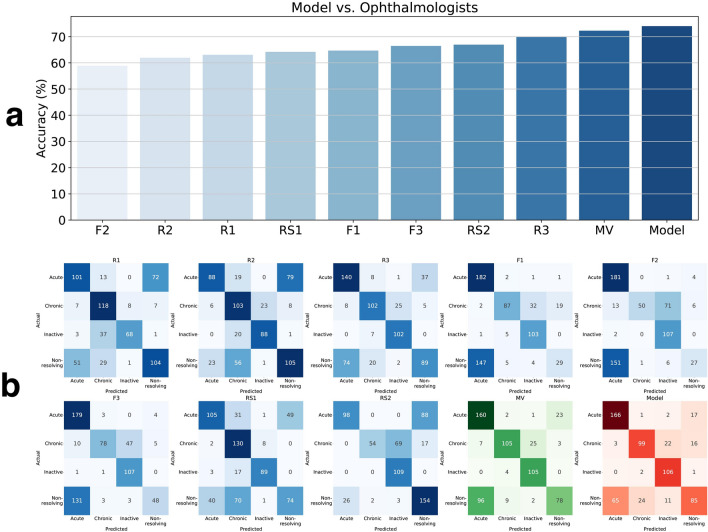Figure 2.
Performance comparison between the proposed model and the ophthalmologists. (a) Accuracy comparison between our proposed model and the ophthalmologists in distinguishing the four different central serous chorioretinopathy subtypes. While our proposed model has achieved a high accuracy of 73.5%, the ophthalmologists (including majority vote [MV]) achieved accuracies of 58.9–72.3%. (b) Confusion matrix comparison between our model and the ophthalmologists in distinguishing the four different central serous chorioretinopathy subtypes. All subjects, i.e., the eight ophthalmologists, majority vote, and the proposed model generated more false cases in distinguishing acute and non-resolving subtypes than other retinal disease pairs. R1, R2, and R3 denote ophthalmology residents with < 1, 3, and 4 years of experience, respectively. F1, F2, and F3 denote retina fellows with < 1, 2, and 2 years of experience, respectively. RS1 and RS2 refer to retina specialists (RS) with > 10 years of experience. MV refers to the majority vote results obtained by eight ophthalmologists. F retina fellow, R ophthalmology resident.

